Casariche has an exceptional archaeological richness, as a result of the enclave where the region of Estepa is located, between Lower and Upper Andalusia.
Despite the small size of its area, 53 kilometres square, its archaeological importance has been highlighted due to research This investigation has yielded a total of 41 archaeological sites of varying nature and importance, among which we can highlight the following:
Located 3 kilometers to the north of the town. The existence and importance of the oppidum of Ventippo is well known. Numerous authors have identified the Roman city of Ventippo with the remains found on this hill, as attested by the ruins that are still preserved there, dating its occupation from the 5th century BC to the 6th century AD.
The sources claim the presence of Ventippo in the context of the Civil War between the supporters of Caesar and the supporters of Cnaeus Pompey, placing Caesar in the capture of the city of Ventippo the day before the battle of Munda, on 16 March 45 BC.
The toponym has been recorded on up to five occasions, and it also has its own coinage with a galleted head on the obverse, and a military figure with a sword, shield and spear topped by a trident on the reverse.
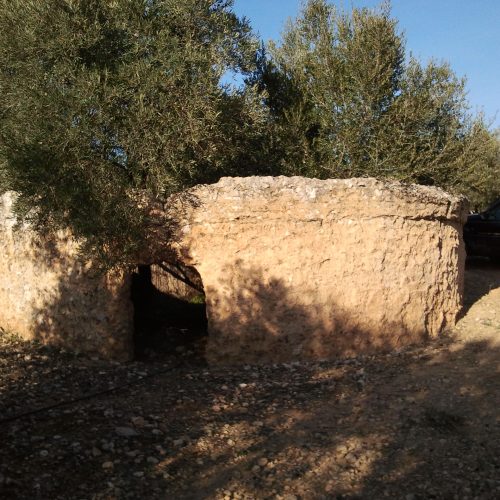
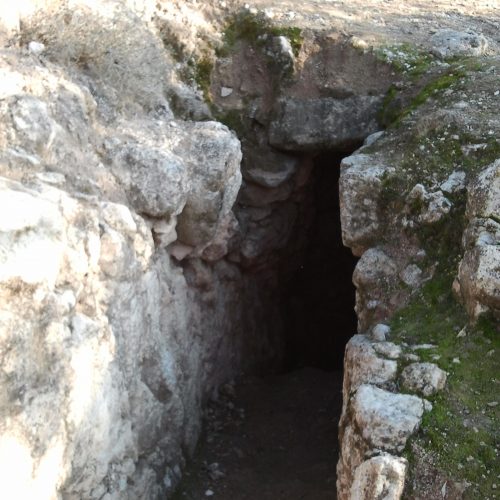
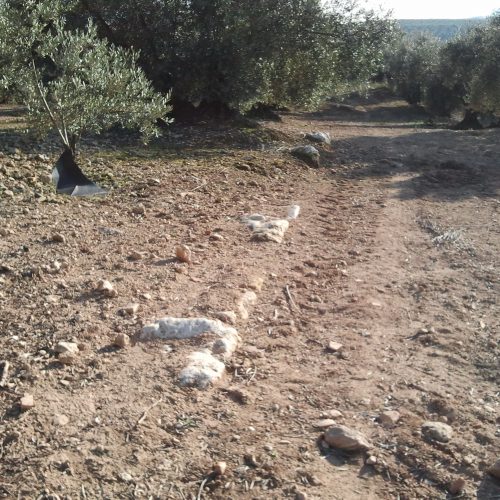
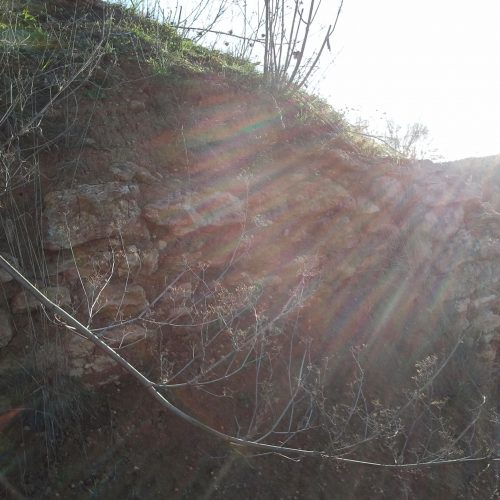
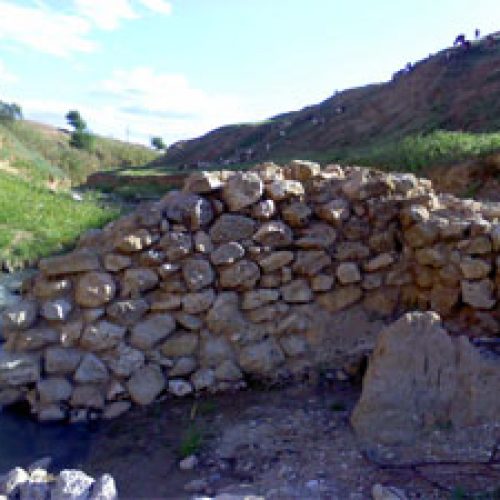
In 1919, in the Cortijo del Médico, located some 5 kilometers to the north of present-day Casariche, a Roman mosaic was reported to have been found. It is the first known to have been found in our village.
When it was discovered, the ensemble measured 5 per 4 meters, and consisted of two adjoining tapestries, with aquatic fauna, fish, crustaceans and a circular tondo with the mask of Oceanus presiding over the ensemble. The scene was completed by the Seasons, Hippocampi and Tritons.
Nowadays, this mosaic is nowhere to be found, having been removed from its original site shortly after its discovery.
![00000001[1]](https://turismocasariche.es/wp-content/uploads/elementor/thumbs/000000011-pxi70eh0qxtidq0zumts9doeim5gjj59kpa6vteqvc.jpg)
![00000001[3]](https://turismocasariche.es/wp-content/uploads/elementor/thumbs/000000013-pxi70gcp4lw30xy9jnn1ed7bpdw6yxcq8yl5udbyiw.jpg)
![00000001[11]](https://turismocasariche.es/wp-content/uploads/elementor/thumbs/0000000111-pxi70hajbfxdcjwwe61nyuysarrk6mggl38nbnakco.jpg)
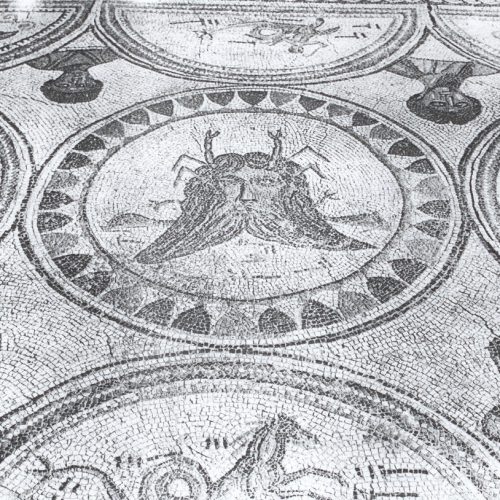
A Roman villa that survived centuries after the fall of the Roman Empire, when it may have been abandoned, only to be occupied again in modern times (the enclave is mentioned in 1536). In contemporary times due agglomeration of small farms, is converted into a hamlet.
Various objects, such as axes, ceramic galbos and Roman construction artifacts have been found at the site.
In 1970, a mosaic with geometric figures from the 2nd-3rd century AD was discovered. This work was extracted and exhibited in the Archaeological Museum of Seville.
In 1985, a mosaic was found on the “El Alcaparral” estate, which led to the subsequent discovery of a large Roman villa, dated between the 3rd and 5th centuries AD.
This area is an agricultural and livestock farm in the Genil valley. After two excavation campaigns, in 1985 and 1986, respectively, a total of 15 pavements of different styles and importance were found, as well as numerous remains of ceramic material and coins.
In the year 2000, all the mosaics found at the “El Alcaparral” site were extracted, and years later they became part of the Casariche Roman Mosaic Museum Collection, where most of them are currently on display.
| Cookie | Tipo | Duración | Descripción |
|---|---|---|---|
| cookielawinfo-casilla-funcional | 0 | 11 meses | La cookie está configurada por GDPR Cookie Consent para registrar el consentimiento del usuario para las cookies en la categoría "Funcional". |
| cookielawinfo-casilla-necesario | 0 | 11 meses | Esta cookie está configurada por el complemento GDPR Cookie Consent. Las cookies se utilizan para almacenar el consentimiento del usuario para las cookies en la categoría "Necesario". |
| cookielawinfo-casilla-otros | 0 | 11 meses | Esta cookie está configurada por el complemento de consentimiento de cookies de GDPR. La cookie se utiliza para almacenar el consentimiento del usuario para las cookies en la categoría "Otros. |
| cookielawinfo-casilla-rendimiento | 0 | 11 meses | Esta cookie está configurada por el complemento de consentimiento de cookies de GDPR. La cookie se utiliza para almacenar el consentimiento del usuario para las cookies en la categoría "Rendimiento". |
| cookielawinfo-checkbox-análisis | 0 | 11 meses | Esta cookie está configurada por el complemento de consentimiento de cookies de GDPR. La cookie se utiliza para almacenar el consentimiento del usuario para las cookies en la categoría "Análisis". |
| vista_política_cookies | 0 | 11 meses | La cookie está configurada por el complemento GDPR Cookie Consent y se utiliza para almacenar si el usuario ha dado su consentimiento o no para el uso de cookies. No almacena ningún dato personal. |
| Cookie | Tipo | Duración | Descripción |
|---|---|---|---|
| cookielawinfo-casilla-funcional | 0 | 11 meses | La cookie está configurada por GDPR Cookie Consent para registrar el consentimiento del usuario para las cookies en la categoría "Funcional". |
| cookielawinfo-casilla-necesario | 0 | 11 meses | Esta cookie está configurada por el complemento GDPR Cookie Consent. Las cookies se utilizan para almacenar el consentimiento del usuario para las cookies en la categoría "Necesario". |
| cookielawinfo-casilla-otros | 0 | 11 meses | Esta cookie está configurada por el complemento de consentimiento de cookies de GDPR. La cookie se utiliza para almacenar el consentimiento del usuario para las cookies en la categoría "Otros. |
| cookielawinfo-casilla-rendimiento | 0 | 11 meses | Esta cookie está configurada por el complemento de consentimiento de cookies de GDPR. La cookie se utiliza para almacenar el consentimiento del usuario para las cookies en la categoría "Rendimiento". |
| cookielawinfo-checkbox-análisis | 0 | 11 meses | Esta cookie está configurada por el complemento de consentimiento de cookies de GDPR. La cookie se utiliza para almacenar el consentimiento del usuario para las cookies en la categoría "Análisis". |
| vista_política_cookies | 0 | 11 meses | La cookie está configurada por el complemento GDPR Cookie Consent y se utiliza para almacenar si el usuario ha dado su consentimiento o no para el uso de cookies. No almacena ningún dato personal. |
| Cookie | Tipo | Duración | Descripción |
|---|---|---|---|
| cookielawinfo-casilla-funcional | 0 | 11 meses | La cookie está configurada por GDPR Cookie Consent para registrar el consentimiento del usuario para las cookies en la categoría "Funcional". |
| cookielawinfo-casilla-necesario | 0 | 11 meses | Esta cookie está configurada por el complemento GDPR Cookie Consent. Las cookies se utilizan para almacenar el consentimiento del usuario para las cookies en la categoría "Necesario". |
| cookielawinfo-casilla-otros | 0 | 11 meses | Esta cookie está configurada por el complemento de consentimiento de cookies de GDPR. La cookie se utiliza para almacenar el consentimiento del usuario para las cookies en la categoría "Otros. |
| cookielawinfo-casilla-rendimiento | 0 | 11 meses | Esta cookie está configurada por el complemento de consentimiento de cookies de GDPR. La cookie se utiliza para almacenar el consentimiento del usuario para las cookies en la categoría "Rendimiento". |
| cookielawinfo-checkbox-análisis | 0 | 11 meses | Esta cookie está configurada por el complemento de consentimiento de cookies de GDPR. La cookie se utiliza para almacenar el consentimiento del usuario para las cookies en la categoría "Análisis". |
| vista_política_cookies | 0 | 11 meses | La cookie está configurada por el complemento GDPR Cookie Consent y se utiliza para almacenar si el usuario ha dado su consentimiento o no para el uso de cookies. No almacena ningún dato personal. |
| Cookie | Tipo | Duración | Descripción |
|---|---|---|---|
| cookielawinfo-casilla-funcional | 0 | 11 meses | La cookie está configurada por GDPR Cookie Consent para registrar el consentimiento del usuario para las cookies en la categoría "Funcional". |
| cookielawinfo-casilla-necesario | 0 | 11 meses | Esta cookie está configurada por el complemento GDPR Cookie Consent. Las cookies se utilizan para almacenar el consentimiento del usuario para las cookies en la categoría "Necesario". |
| cookielawinfo-casilla-otros | 0 | 11 meses | Esta cookie está configurada por el complemento de consentimiento de cookies de GDPR. La cookie se utiliza para almacenar el consentimiento del usuario para las cookies en la categoría "Otros. |
| cookielawinfo-casilla-rendimiento | 0 | 11 meses | Esta cookie está configurada por el complemento de consentimiento de cookies de GDPR. La cookie se utiliza para almacenar el consentimiento del usuario para las cookies en la categoría "Rendimiento". |
| cookielawinfo-checkbox-análisis | 0 | 11 meses | Esta cookie está configurada por el complemento de consentimiento de cookies de GDPR. La cookie se utiliza para almacenar el consentimiento del usuario para las cookies en la categoría "Análisis". |
| vista_política_cookies | 0 | 11 meses | La cookie está configurada por el complemento GDPR Cookie Consent y se utiliza para almacenar si el usuario ha dado su consentimiento o no para el uso de cookies. No almacena ningún dato personal. |
| Cookie | Tipo | Duración | Descripción |
|---|---|---|---|
| cookielawinfo-casilla-funcional | 0 | 11 meses | La cookie está configurada por GDPR Cookie Consent para registrar el consentimiento del usuario para las cookies en la categoría "Funcional". |
| cookielawinfo-casilla-necesario | 0 | 11 meses | Esta cookie está configurada por el complemento GDPR Cookie Consent. Las cookies se utilizan para almacenar el consentimiento del usuario para las cookies en la categoría "Necesario". |
| cookielawinfo-casilla-otros | 0 | 11 meses | Esta cookie está configurada por el complemento de consentimiento de cookies de GDPR. La cookie se utiliza para almacenar el consentimiento del usuario para las cookies en la categoría "Otros. |
| cookielawinfo-casilla-rendimiento | 0 | 11 meses | Esta cookie está configurada por el complemento de consentimiento de cookies de GDPR. La cookie se utiliza para almacenar el consentimiento del usuario para las cookies en la categoría "Rendimiento". |
| cookielawinfo-checkbox-análisis | 0 | 11 meses | Esta cookie está configurada por el complemento de consentimiento de cookies de GDPR. La cookie se utiliza para almacenar el consentimiento del usuario para las cookies en la categoría "Análisis". |
| vista_política_cookies | 0 | 11 meses | La cookie está configurada por el complemento GDPR Cookie Consent y se utiliza para almacenar si el usuario ha dado su consentimiento o no para el uso de cookies. No almacena ningún dato personal. |
| Cookie | Tipo | Duración | Descripción |
|---|---|---|---|
| cookielawinfo-casilla-funcional | 0 | 11 meses | La cookie está configurada por GDPR Cookie Consent para registrar el consentimiento del usuario para las cookies en la categoría "Funcional". |
| cookielawinfo-casilla-necesario | 0 | 11 meses | Esta cookie está configurada por el complemento GDPR Cookie Consent. Las cookies se utilizan para almacenar el consentimiento del usuario para las cookies en la categoría "Necesario". |
| cookielawinfo-casilla-otros | 0 | 11 meses | Esta cookie está configurada por el complemento de consentimiento de cookies de GDPR. La cookie se utiliza para almacenar el consentimiento del usuario para las cookies en la categoría "Otros. |
| cookielawinfo-casilla-rendimiento | 0 | 11 meses | Esta cookie está configurada por el complemento de consentimiento de cookies de GDPR. La cookie se utiliza para almacenar el consentimiento del usuario para las cookies en la categoría "Rendimiento". |
| cookielawinfo-checkbox-análisis | 0 | 11 meses | Esta cookie está configurada por el complemento de consentimiento de cookies de GDPR. La cookie se utiliza para almacenar el consentimiento del usuario para las cookies en la categoría "Análisis". |
| vista_política_cookies | 0 | 11 meses | La cookie está configurada por el complemento GDPR Cookie Consent y se utiliza para almacenar si el usuario ha dado su consentimiento o no para el uso de cookies. No almacena ningún dato personal. |